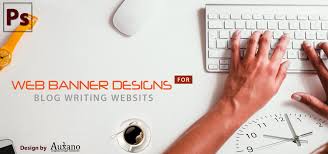 |
| web designing course in rawalpindi |
Not a day passes by without a new minor design breakthrough or another unique and more creative way of utilising web designing codes. The body of web design is sleek & transformative, shedding translucent layer after layer as it mixes and matches perpetually new clothes.
Some of patterns, nevertheless, have emerged to become 2015's most familiar web design trends, some of them short-lived but others quickly becoming an integral part of its foundation, paving the way to the next big thing.
What design elements are currently trending, and what does it portend for the future?
Web Designing Trends in 2016 explained in web designing course in rawalpindi
Cross-Platform Interactivity
Increasingly, designers and programmers are recognising the need for cross-platform consistency. Responsive Web Design (RWD) is being used to respond and conform to a variety of screen sizes. A website that has a fluid, unified design which changes according to platform is much more interactive than a tiny screen with a full-fledged layout designed for a desktop computer. Likewise, SVG or Scalable Vector Graphics are becoming more popular on the web this year as a way to effortlessly scale images, enhancing design control and providing greater quality for retina screens.
The flat-style mobile user interface (UI) has also risen sharply in popularity over the last few years, pointing to a lack of gradients, block colours and clear-cut design. First popularised in mainstream media by Microsoft's Metro design which aimed to focus more on content and less on graphics, it has since been adopted by Windows 8 and the Xbox 360 dashboard.
Later this year, Apple's new iOS7 iPhone will arrive on the market with a sleek new design that also features a largely flat-style interface. Coupled with this is the increasing use of vivid colours and unified but striking typography, with all these elements being adopted into web layouts as a way to further streamline user experience.
Minimalism in web designing course in rawalpindi
The minimalistic trend is also being highlighted by design elements such as the one page layout. Websites with less content such as designer portfolios are increasingly favouring an incredibly minimalistic design with bold, contrasting colours that act as flat dividers for different sections of content. The widely used Intro Box discards the tired About Me page by condensing the author's introduction to a small area. A large footer with links and information usually completes this business card-esque layout.
Likewise, companies are using simplistic pictorial landing pages to introduce products and services to potential clients: a beautifully presented, minimal approach designed to highlight content that allows the consumer to find information as easily and quickly as possible.
CSS3 / JavaScript / jQuery Capabilities
As browser support for CSS3 features grows, so do the interactive possibilities of its dynamic effects: CSS transparency, for example, offers opacity editing on any webpage element. Interesting hover effects also allow for innovative image and typography use, with the ability to time the transition to your exact requirements.
Flash and ActionScript have been shoved to the side in favour of JavaScript and jQuery, with code widely available as open source and helping introduce creative ways of organising layouts and pages such as sliding webpage panels, which allow for seamless content by pushing pages from left to right.
User Interactivity / Shareability
Website layouts are evolving to become ever more interactive for ultimate user experience. It comes as no surprise, therefore, that image-sharing website Pinterest has popularised the use of infinite scrolling, an incredibly addictive experience that compels the user to keep scrolling... keep scrolling... and just keep scrolling.
Although it is only now becoming widespread, this technique was first most successfully applied by blogging giant Tumblr, whose claim to fame is largely the addictive appeal of its heavily image-based dashboard. As such, tumblr bloggers were quick to discern the short attention span of their readers and replicated infinite scrolling JavaScript in their individual blogs to maximise viewer attention. Designers have also been applying infinite scrolling with the use of fixed headers, which further ease of navigation.
Other trends that are in vogue includes parallax scrolling, an effect that lets the image move at a slower pace than the superimposed text, creating a sense of 3D depth and providing engaging dividers for textual content. Companies are also increasingly employing built-in online QR codes, encouraging viewers to engage cross-platform for a complete user experience, and the application of social media badges on sites and articles. These allow the viewer to share content ubiquitously across social media websites.
Data Integration in
As the use of infographics is on the rise, so is the use of programming toolkits like D3.js, creating interactive data visualisations that are actually crawlable: meaning that search engines like Google can use their bots to crawl the information to boost the site's SEO ranking as well as the possibility of automatically updating and improving statistics.
Designers are using minimalistic layouts and Metro-style user interface as a way to emphasise a recent focus on Content First: creating efficient, searchable, interactive websites that maximise user experience and ultimately creating design that enhances the content, not distracting or overshadowing it.
What's Next in web designing course in islamabad
Some of the trends listed above are probably just that: trends that will fade out in popularity in the next few years. Others, like Content First, infinite scrolling, the flat-style UI, and RWD are important founding elements of a forming web design philosophy that aims to unify platforms and create a streamlined network of user interactivity and interface. Design is becoming simpler, so content can become a priority. By abandoning the excess, designers seem to be ushering in a new era of design that serves you ever more quickly, efficiently and satisfactorily.
No comments:
Post a Comment
Note: Only a member of this blog may post a comment.